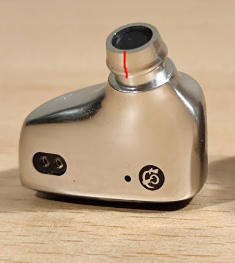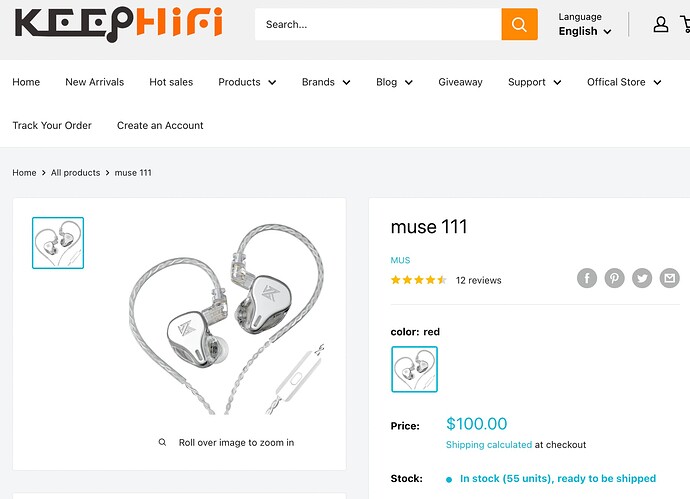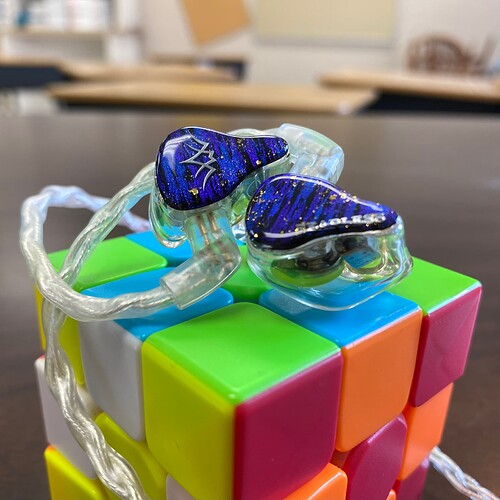Hi, I’ve had some good time with the KAI and I’m ready to give first thoughts about it now.
When I first heard it, the absolute first thought I had was “Since I’ve started listening to better quality sets, this is what I wish the T3+ sounded like”. I got interested in KAI because it was being described and looked like (in FR) a set that would be great for extended listening, with smooth signature and completely inoffensive highs. As I listened to cleaner, clearer sets like Aurora and Starsea I found that when I went back to T3+ it sounded tonally correct but everything had a film on it. Like if you leave a soup sitting too long and you get that icky settling on top. Turns out, I can find what I’m looking for. If you enjoyed the T3+ and think that’s a really good entry level set, then KAI is completely an upgrade. It does everything the T3+ does but just better. It’s exactly the set that I’d want to pick up to listen to music if I’m doing chores around the house, or getting on the bus to go somewhere and I’m walking the street. It’s got ALL the quality to make the music sound good, but if you can’t listen for every little nuanced detail or just want to be playing background music while you’re working on something then these are perfect. Then if you want to turn the volume up, these can bump pretty solidly. They’re not going to beat a bashed IEM, but they definitely will smash even harmon tuned IEMs in bass.
As for your question here, I’ll try to answer you now. I’ll also talk a little bit about how Starsea (in the standard configuration) compares to them both. I’ll use a few songs that really caught my attention, and that I use regularly, to listen a little more critically (not REALLY critical listening, but something a little more like it)
Tiring Game - John Newman feat. Charlie Wilson
KAI has more sub-bass and forward upper mids than Aurora.
Aurora has more body in the rest of the bass and into the low-mids. Aurora has thick snap in the bass, KAI has more of a fast thud. Aurora also has better soundstage and space but you feel like the song is being played to you more with KAI
Starsea is kind of the matured mix of the two. Starsea doesn’t have more sub-bass, and it doesn’t have more mid-bass, but it puts both together better than either KAI or Aurora. It has a bigger soundstage than both, and it just makes things feel more than hear. There’s a drop near the :42 mark, where on both KAI and Aurora it sounds strong like you’re there in front of the performance, but on Starsea, it’s like you’re rocking in church and the whole choir is jumping as they sing. You don’t just hear it, I feel like I’m experiencing it.
Warm It Up - Logic feat. Young Sinatra
Starting with Aurora first. Of the three, this is the one I would want to listen to rap least with. It is NOT bad, but compared to both it doesn’t have the sub-bass. If you only heard Aurora you could bump your head with it. Once you hear KAI, Aurora gets too polite.
I put in KAI and I just start bobbing. That juicy sub-bass makes it go and do the thing. And you want to start inching the volume up, and KAI can take it. Rap is delicious on KAI.
Starsea definitely handles rap better than Aurora, because it has enough sub-bass to get that bump. The thing that stands out though, is that it’s just a little too bright. KAI has just…a thickness to it because the treble is tuned down. Starsea comes close but I’d go to KAI first here
Animal - The Beautiful Bodies
Starting with Starsea, it’s just big, loud fun. The soundstage makes the opening sound almost bombastic on the drop. The drums drive the beat, and the guitars are sharp. The head bobbing the KAI produced in the last track is here in spades. And if you stop to listen to the technicalities, everything sounds clear and you can pick the different elements out with your ear, including the drums that don’t get drowned out in the busy passages, like can happen with lesser sets.
Aurora is clean. There is enough sub-bass but having the mid-bass elevated lets the drums thump. It’s under control though and the mids sound very good and you get lots of the same technicalities I just gave Starsea credit for. It’s just a little less in the soundstage, less big in the bass, and so feels a little more controlled.
KAI is the other side of the coin. KAI has the thump and low energy, without having the upper mid/treble energy. So the drums are as present, but that’s because the guitars take a back seat. And you lose the soundstage level of either of the other two. But it is a FUN sound.
Beautiful (Mixed Version on A State of Trance 2021) - Giuseppe Ottaviani
On Aurora, the cleanliness that is a blessing with rock can be a curse here, like in hip-hop. There is enough bass that if all you had was Aurora, it could be satisfying, and it’s clean so you can get all the elements of the track and pick them out. Technically, it’s very solid and I do enjoy myself. But you don’t go to a rave to enjoy yourself. You go to a rave to party.
KAI wants you to put your drink down and f’ing dance. All the politeness gets put aside and you feel the energy. KAI definitely flexes its muscle when the genre is bass-heavy, and it’s a lot better at getting you into the mood, though if you get a little too high in volume it can also lose control and get too bright. You’ll never have the problem of losing control with Aurora cause it’s not trying to go there.
Starsea has noticeably less sub-bass than KAI, but more than Aurora, so you don’t have that overly polite presentation. I would say Aurora is like hearing the house party from outside the building on line. Starsea is when you’re in coat check, dropping your stuff off to head to the bar to get your first drink in you, and KAI is when you’ve been there an hour already and people are dripping in sweat as the DJ spins the next remix and you’re lost in the music.
Fundamental Elements of Madness - Dax Johnson
This song might become my best soundstage test, thanks to what Starsea taught me about it. But starting with KAI, I go right to :47-1:30 because this is where I learned how to tell what a set can do with soundstage. On Kai, you get a pretty wide soundstage: center keys on the piano play in the center of your face. Lower register keys move out to your left ear, higher register move to your right ear. Pretty straightforward.
Aurora sets the center keys between my nose and my right eye, the lower register at around my left earlobe and the higher register on the top of my right ear.
Starsea puts the center keys on my right eye, the lower register below my left ear, and the upper register above my right ear. Hearing this song on Starsea was the one of the first times that “3D and holographic” sound made actual sense to me. As I’ve noted in the other songs, Starsea is the set that actually immerses me in a way I didn’t understand until I heard it, and then heard something else. It makes sense now.
So…If you haven’t been able to figure out by now, I’m not the one to definitively say “This set is better than that set” if I don’t have to. Sometimes something is just a different class and you have to admit it (Like with T3+. It’s just not on this level). But these three sets all trade things back and forth. But they’re different tools for different tasks.
KAI is absolutely a set you can play without restraint for hip-hop, techno/dance/trance, or whatever you throw at it that you want meaty sound that won’t wear you out. There are things it does better than Aurora or Starsea and I’d reach for it first. It won’t be first choice, but it absolutely has a place in my, or any, rotation.


